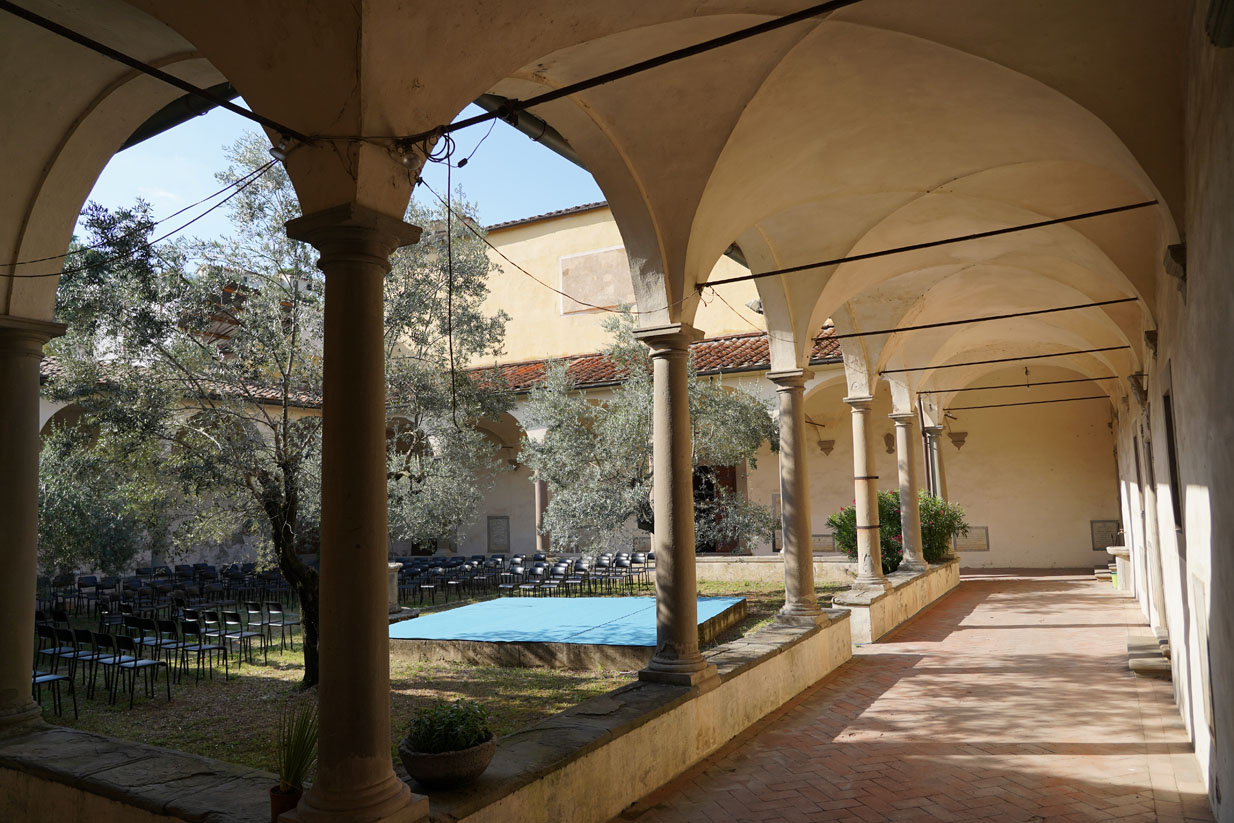The church dedicated to St. Michael, the patron saint of the Carmignano inhabitants, was built around 1330 where there was already a small oratory with the convent realized by Bernard of Quintavalle, and was originally dedicated to St. Francis of Assisi, who according to tradition had come to preach at Carmignano in 1211. Only in 1782 it was transferred to the seat of the parish of St. Michael, built around the year one thousand and located at the foot of the Rocca di Carmignano where today there is a farmhouse.
The building shows once again, in the original configuration, the typical model of the Franciscan church (sober, chaste, and severe) with a large central nave and apse chapels. Original plant remains fourteenth track, especially on the left side of the church.
The building, deeply damaged by the conflicts of the Second World War, has seen many renovations in the last century which led, among other measures, the elimination of some buildings dating from the seventeenth and eighteenth centuries.
The exterior is characterized by a simple façade which supports the gallery, eighteenth century, with five arches supported by Tuscan columns, engaged columns and pilasters at the corners.
The interior features the famous painting by Jacopo Carucci, called Pontormo, Visitazione (1530 approx) in which Mary and Elizabeth are represented in the act of exchanging thoughts and messages through the strength of their looks, assisted by two attendants. In addition to the work of the painter Empoli, the Church maintains the fifteenth century frescoes and paintings of the XV-XVII centuries, including the canvas (1601) the painter Cosimo Lotti Madonna col Bambino tra i Santi Domenico, Pio V, Caterina da Siena e Caterina d’Alessandria.
The cloister square is annexed to the building, with the porch overlooking the garden where it retains a well from the seventeenth century the original church, and the Oratorio Society of SS. Sacramento.
For more: C. Cerretelli, Prato e la sua provincia, Prato 2003, p. 344 sgg.





